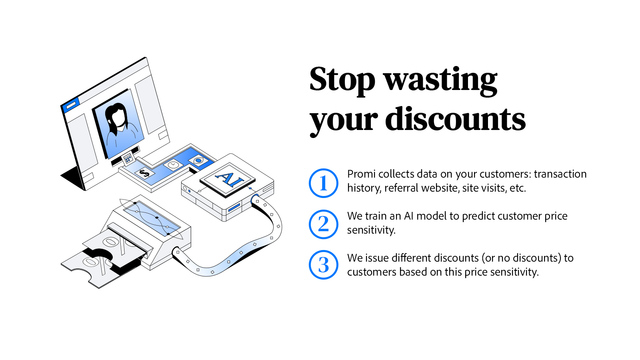In today's competitive business landscape, boosting sales conversion is a crucial goal for any organization. By optimizing your sales funnel and implementing effective strategies, you can significantly increase your chances of converting prospects into paying customers. In this ultimate guide, we will explore the importance of sales conversion, key metrics to consider, strategies to increase conversion rates, and tips for better sales conversion. We will also discuss the essential role of measuring and continually improving sales conversion. So, let's dive in and uncover the secrets to boosting your sales conversion.
Understanding Sales Conversion
Sales conversion refers to the process of turning leads or prospects into customers. It measures the effectiveness of your marketing and sales efforts, highlighting how successful you are at closing sales. Understanding sales conversion is essential because it allows you to evaluate your current performance, identify potential bottlenecks, and make informed decisions to optimize your conversion rates.
When it comes to sales conversion, there is much more to consider than just the basic definition. It involves a complex interplay of various factors that can significantly impact your business's success. Let's delve deeper into the importance of sales conversion and explore some key metrics that can help you gain valuable insights.
The Importance of Sales Conversion
Boosting sales conversion is vital for the growth and success of any business. By increasing your conversion rates, you can maximize the return on your marketing investment and generate more revenue. A higher conversion rate means more customers and ultimately more profits.
However, the importance of sales conversion goes beyond just the financial aspect. It also reflects the effectiveness of your marketing and sales strategies. A high conversion rate indicates that your messaging and value proposition resonate with your target audience, compelling them to take action and become paying customers. On the other hand, a low conversion rate may indicate a need for improvement in your approach.
Key Metrics in Sales Conversion
When analyzing sales conversion, several key metrics can provide valuable insights. These metrics go beyond the basic conversion rate and delve into various aspects of your sales process. Let's take a closer look at some of these metrics:
- Conversion Rate: This measures the percentage of leads or prospects that convert into customers. It is a fundamental metric that gives you a snapshot of your overall sales performance. A higher conversion rate indicates that your sales process is effective in converting leads into paying customers.
- Average Order Value: It determines the average amount spent by customers on each purchase. This metric helps you understand the purchasing behavior of your customers and can guide your pricing and upselling strategies. By increasing the average order value, you can boost your revenue without acquiring additional customers.
- Customer Lifetime Value: This metric calculates the total value a customer brings to your business over their entire relationship with your company. It takes into account factors such as repeat purchases, upsells, and referrals. Understanding the customer lifetime value can help you prioritize customer retention and loyalty initiatives, as well as identify opportunities for cross-selling and upselling.
- Conversion Time: It refers to the time it takes for a lead to become a customer. This metric helps you evaluate the efficiency of your sales process and identify potential bottlenecks. A shorter conversion time indicates a streamlined and effective sales process, while a longer conversion time may signify areas for improvement, such as reducing friction points or enhancing lead nurturing strategies.
By analyzing these key metrics and understanding their interplay, you can gain valuable insights into your sales conversion process. This knowledge empowers you to make data-driven decisions and implement targeted strategies to optimize your conversion rates.
Remember, sales conversion is not a one-time effort but an ongoing process. Continuously monitoring and analyzing your conversion metrics allows you to identify trends, spot opportunities for improvement, and adapt your strategies to meet the evolving needs of your customers.
Building a Solid Sales Funnel
A well-designed sales funnel plays a crucial role in guiding prospects through the buying process and increasing sales conversion. It breaks down the customer journey into distinct stages, allowing you to effectively nurture leads and drive them towards making a purchase.
Imagine you're a business owner who wants to increase your sales and grow your customer base. You know that simply reaching out to potential customers and hoping for the best won't cut it. That's where a sales funnel comes in.
The Role of a Sales Funnel in Conversion
A sales funnel provides a clear structure for your marketing and sales efforts. It helps you understand where prospects are in the customer journey and tailor your approach accordingly. By utilizing a sales funnel, you can provide targeted and personalized experiences to your prospects, increasing the likelihood of converting them into customers.
Let's dive deeper into the different stages of a sales funnel and how they contribute to the conversion process.
1. Awareness: At this stage, potential customers become aware of your brand and the solutions you offer. It's crucial to create compelling content that grabs their attention and addresses their pain points. By understanding your target audience, you can develop content that resonates with their needs and preferences.
2. Interest: Once prospects are aware of your brand, you need to nurture their interest. This is where you create engaging and informative content that educates them about your products or services. By showcasing the value you provide, you can build trust and establish yourself as an authority in your industry.
3. Consideration: At this stage, prospects are seriously considering making a purchase. It's essential to implement lead generation tactics to capture their interest and contact information. This can include strategies such as email marketing campaigns, social media advertising, and landing pages. By capturing their information, you can continue to nurture the relationship and move them further down the funnel.
4. Decision: Now that you have captured leads, it's time to nurture them further. Regularly communicate with them through targeted email sequences and personalized content. Address their specific pain points and provide solutions that meet their needs. By building trust and demonstrating your expertise, you increase the chances of them choosing your product or service.
5. Action: This is the stage where prospects convert into customers. Promptly respond to inquiries, address objections, and provide a seamless buying experience. Make the process as easy and convenient as possible, ensuring a positive experience for your customers.
6. Loyalty: Once a sale is made, your relationship with the customer doesn't end there. Focus on delivering exceptional customer service to retain customers and encourage repeat purchases. Provide ongoing support, engage with them on social media, and offer exclusive deals or rewards. By delighting your customers, you can turn them into loyal advocates for your brand.
Steps to Creating an Effective Sales Funnel
Creating a successful sales funnel involves several essential steps:
- Identify Your Target Audience: Understanding your target audience is crucial in designing a sales funnel that resonates with their needs and preferences. Conduct market research, analyze customer data, and create buyer personas to gain insights into their motivations and pain points.
- Create Compelling Content: Develop engaging and informative content to attract and engage prospects at each stage of the funnel. Use a mix of blog posts, videos, infographics, and case studies to educate and inspire your audience.
- Implement Lead Generation Tactics: Utilize various lead generation strategies, such as email marketing campaigns, social media advertising, and landing pages, to capture the interest and contact information of potential customers. Offer valuable incentives, such as free ebooks or exclusive discounts, to encourage sign-ups.
- Nurture Leads: Regularly communicate with leads through targeted email sequences, personalized content, and follow-ups, building trust and nurturing the relationship. Provide valuable insights, address their pain points, and showcase the benefits of your products or services.
- Close the Sale: Promptly respond to inquiries, address objections, and provide a seamless buying experience to encourage prospects to convert into customers. Offer multiple payment options, provide clear product information, and offer a hassle-free checkout process.
- Delight Customers: After a sale, focus on delivering exceptional customer service to retain customers and encourage repeat purchases. Offer personalized recommendations, provide ongoing support, and listen to feedback to continuously improve your products or services.
By following these steps and continuously optimizing your sales funnel, you can effectively guide prospects through the customer journey, increase conversion rates, and grow your business.
Strategies to Increase Sales Conversion
To boost sales conversion, you need to employ effective strategies that resonate with your target audience and entice them to take action. Let's explore some proven strategies:
Improving Your Value Proposition
Your value proposition is a crucial factor that can significantly impact your conversion rates. Clearly communicate the unique value your product or service offers, highlighting how it solves your customers' problems or fulfills their needs better than competitors. Focus on the benefits and outcomes your customers can expect, and clearly differentiate yourself from the competition.
Utilizing Urgency and Scarcity
Creating a sense of urgency and scarcity can motivate prospects to take immediate action. Limited-time offers, exclusive deals, and countdown timers can evoke the fear of missing out (FOMO), prompting prospects to convert before the opportunity expires. Emphasize the scarcity of your product or service, highlighting the unique features or limited availability.
Optimizing Your Call-to-Action
A compelling call-to-action (CTA) can significantly impact your conversion rates. Use clear and concise language, highlighting the benefits of taking action. Use attention-grabbing design elements, such as contrasting colors and persuasive copy, to make your CTA visually prominent. Test different variations to identify the most effective wording and placement for your CTA.
Tips for Better Sales Conversion
In addition to employing effective strategies, there are several tips that can further improve your sales conversion:
Enhancing Customer Engagement
Engage with your prospects and customers through multiple channels to build trust and foster relationships. Use social media platforms, personalized emails, webinars, and interactive content to establish meaningful connections. Actively listen to customer feedback and address their concerns promptly, demonstrating that you value their opinions and are committed to their satisfaction.
Leveraging Customer Testimonials
Positive customer testimonials can significantly impact the decision-making process of prospects. Display testimonials prominently on your website, social media platforms, and marketing materials. Encourage satisfied customers to leave reviews and ratings, showcasing the value your product or service delivers.
Streamlining the Checkout Process
A complicated and time-consuming checkout process can deter potential customers from completing their purchase. Simplify the checkout process by minimizing form fields, offering guest checkout options, and providing secure payment methods. Offer seamless integration with popular payment gateways to enhance trust and convenience.
Measuring and Improving Sales Conversion
Measuring your sales conversion and continuously improving it are essential for sustained success. Fortunately, several tools can help you track and analyze your conversion rates:
Tools for Tracking Sales Conversion
Google Analytics: A powerful free tool that provides insights into website traffic, user behavior, and conversion rates.
CRM Software: Customer Relationship Management (CRM) software allows you to track every interaction with prospects and customers, providing valuable data on conversion rates and customer behavior.
A/B Testing Tools: These tools enable you to test different variations of your website, landing pages, and CTAs to identify the most effective elements for improving conversion rates.
Regularly Reviewing and Adjusting Your Strategy
To optimize your sales conversion, regularly review your strategy, metrics, and customer feedback. Identify areas of improvement and make data-driven adjustments. Continuously research industry trends, consumer behavior, and competitor strategies to stay ahead of the curve and maintain a competitive edge.
Boosting sales conversion requires a holistic approach that incorporates understanding your target audience, designing a solid sales funnel, implementing effective strategies, and continually measuring and improving your conversion rates. By following the strategies and tips outlined in this ultimate guide, you can optimize your sales conversion and achieve long-term business growth.
Ready to take your Shopify store to the next level? Let Owlfred, your wise and friendly guide, lead the way to a treasure trove of innovative Shopify apps at OwlMix. Whether you're aiming to enhance your marketing strategy, streamline inventory management, or boost your sales conversions, our curated directory has you covered. Don't miss out on the opportunity to optimize your online business with the perfect app. Find your next Shopify app today and watch your e-commerce success take flight!

















